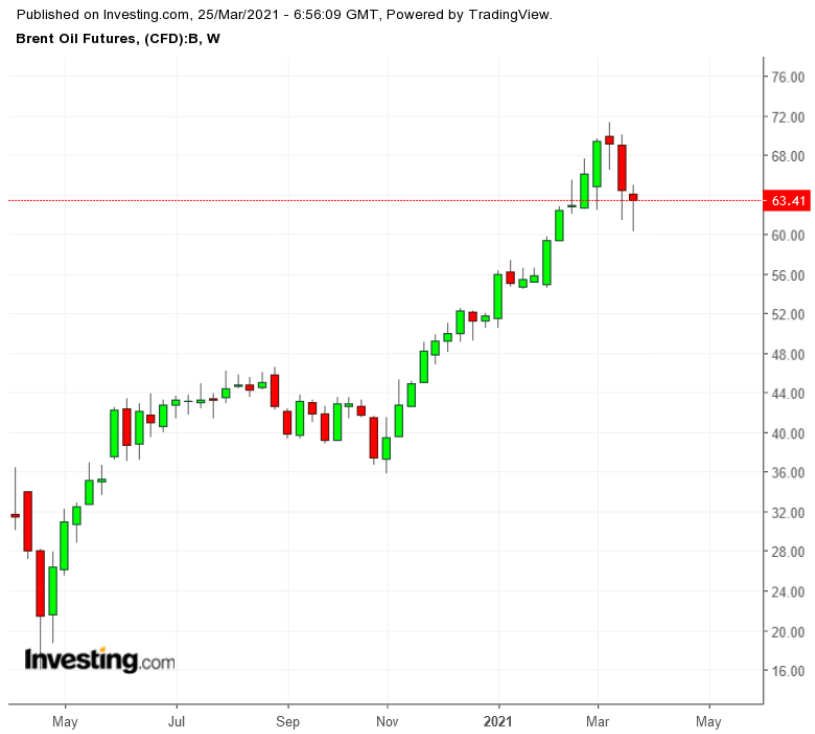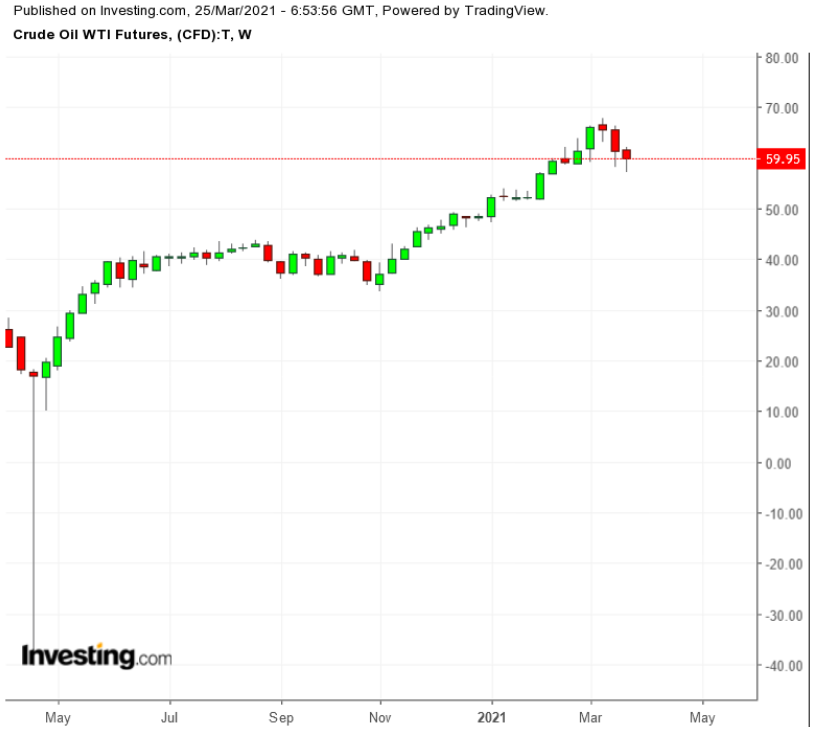Oil prices have remained solidly above the $55 per barrel range (both Brent and WTI) since the beginning of February, and traders should be wondering why we are not seeing new production from the U.S. oil industry.

In fact, both crude benchmarks seem to be safely within the $60 range now, with Brent recently spiking above $70 for a moment, and WTI hovering a little lower.

In recent years, this level of oil pricing would have led to more U.S. production, particularly from the shale fields, so why aren’t we seeing that right now?
According to the EIA, U.S. oil production is averaging about 10.9 million bpd and has been for some time. Production has increased from 9.7 million bpd last August, but it is still below the average production of 13.1 million bpd that we saw this time last year. The oil rig count in the U.S. rose by 9 last week, and it has basically remained in the 300-318 range since January. Even with productivity gains, shale oil producers will likely need to increase the rate of drilling wells just to keep production steady.
But based on recent experiences, we might expect shale oil companies to ramp up drilling and increase production at these crude price points. However, many shale firms seem to have no plans to expand this year. The first quarter energy survey out of the Federal Reserve Bank of Dallas, a government department, provides insights into the current strategies of shale oil companies.
The survey data were collected March 10-18, and 155 energy firms responded, including 104 exploration and production firms and 51 oilfield services firms. According to respondents, the average price needed to cover operating expenses currently ranges from $17 to $34 per barrel (depending on the region). Firms reported needing an average price of $52 per barrel to profitably drill a new well. Of the firms, 80% could profitably drill new wells at or below the Mar. 19 spot price ($61 per barrel) for WTI. Therefore, it would appear that the current higher prices would incentivize higher production.
But the survey provided some surprising news, too. The number of firms planning to grow their operations this year is not high, despite the elevated oil prices. 53% of executives reported that they don’t plan to hire any new employees in 2021. 34% expect to increase their number of employees only slightly in 2021.
In pre-pandemic times, U.S. oil producers would have been quick to ramp up production and take advantage of whatever profits could be made. But now, firms are hesitant.
Here are some reasons why producers may not be ramping up production:
1. Industry Consolidation: When oil prices plunged last year, many smaller, less profitable producers went bankrupt or sold their assets to larger producers. The industry has gone through several periods of consolidation in recent years, but last spring saw the end of several smaller and weaker firms. The remaining firms are larger, better capitalized and don’t see a reason to rush to bring production back online. They aren’t worried about competition from smaller firms, they don’t need the revenue right away, and they would rather wait and see what happens.
2. Financing Difficulties: Even if producers can afford to drill wells profitably at current prices, they would likely still be using financing to do so. Banks may be reluctant to lend money to oil producers to drill new wells for a variety of reasons including the new administration in the White House. Banks are cautious because of sentiment around the Biden team’s seemingly anti-oil policies and fears that Saudi Arabia could decide crash the oil market again like it did last spring.
3. Pessimistic Forecasting: According to the Dallas Fed survey, most firms have a fairly pessimistic view of oil prices. Of the respondents, 56% expect that the price of WTI will be between $50 and $62 by the end of December 2021. 25% expect that WTI will be in the $62 to $68 range by then. Most firms believe that crude prices will be lower than it was when the survey was conducted in mid-March. Firms are hesitant to expand their drilling operations if they expect that WTI is heading lower rather than higher.
4. Federal Regulation: The Biden administration’s moratorium on new oil and gas leases on federal land isn’t a significant factor for production right now (because it does not impact existing wells), it is clear that firms are already concerned about their ability to expand in the future. 58% of executives reported that they are concerned that “increased federal regulation will make their business unprofitable.” These concerns are reflected in the comments many executives offered. With such a pessimistic outlook, it isn’t surprising that firms are hesitant to make large cash outlays now. That keeps the rig count depressed and means the increase in production is muted, at best, unless sentiment changes.
